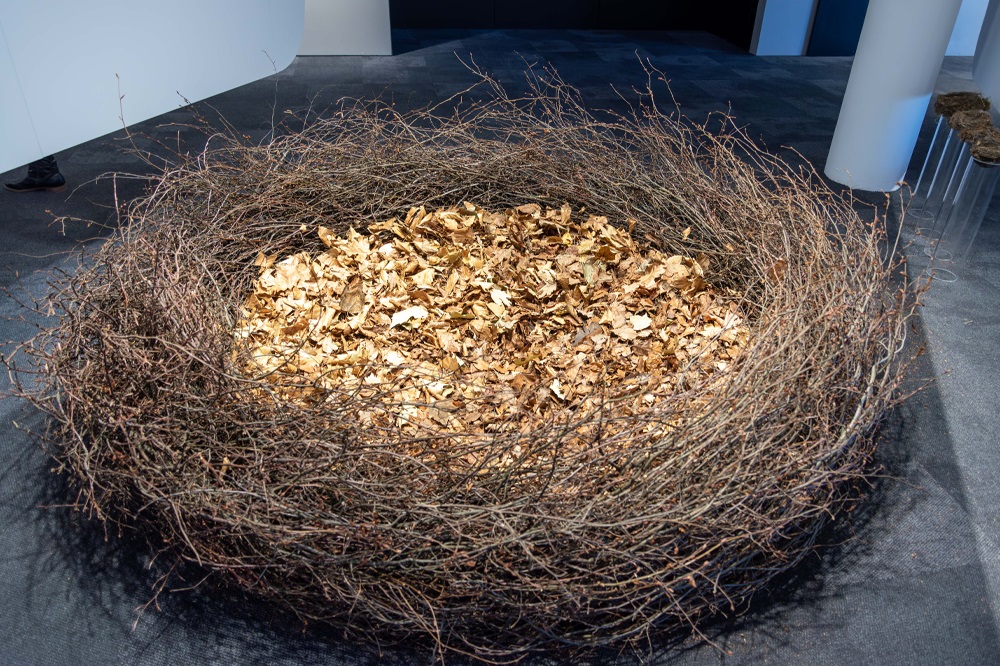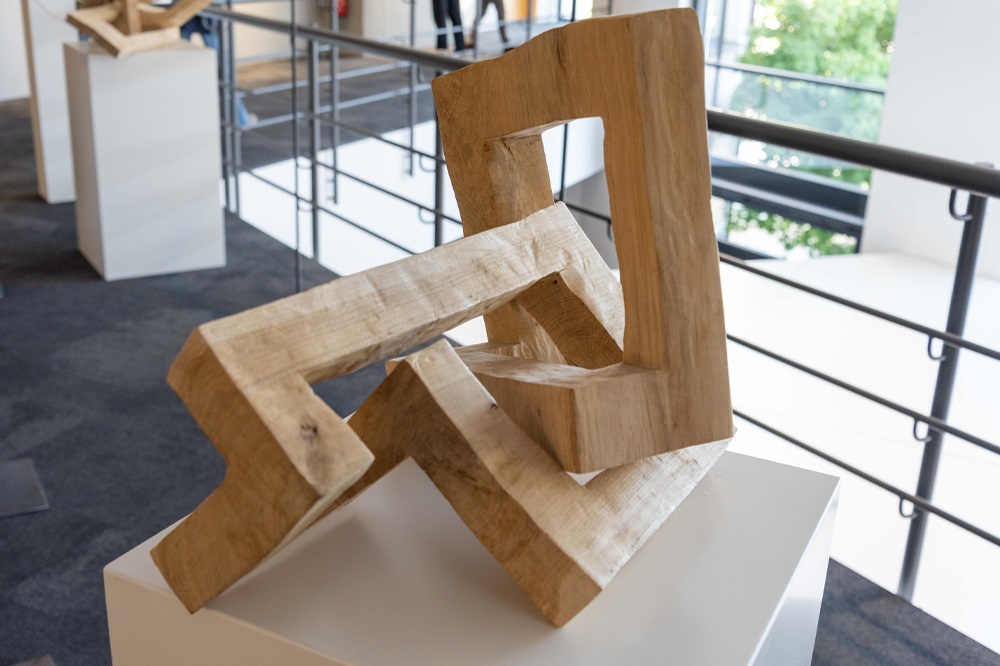When you ask ChatGPT to describe the metaverse, its reply is something like this: “The metaverse is a concept that describes an interactive, virtual reality through which people can enter digital worlds, explore them, and even communicate and interact in them. It is an enhanced version of the Internet that goes beyond Web sites and offers a three-dimensional environment, enabling users to move around virtual worlds in real time and to interact with other users there.” In its response, the artificial intelligence (AI)-based chatbot also mentions virtual reality headsets, augmented reality devices, and things one could do in the metaverse, such as chat and make video calls, play games and learn, or even carry out complex virtual transactions.
It is the nature of artificial intelligence not to give any further importance to the emotional side of this explanation in the first place. Yet it’s precisely this emotional aspect that makes a discussion on the opportunities and risks of the metaverse or virtual realities so complex. Opinions here can vary from extreme enthusiasm to outright rejection. Some people are avoiding the topic altogether because they don’t know much about it or simply aren’t interested; others see massive potential and opportunity.
SAP’s latest art exhibition – The Metaverse: Dreamland or Dystopia? – shines a spotlight on these differing standpoints. Thirteen artists each present their take on how reality and virtuality – and art and technology – are converging. Working in a variety of media, they playfully explore space and time, traversing the real, the augmented, and the virtual. You can choose to visit the exhibition in the real world at the SAP International Training Center in Walldorf or you can experience it in a virtual gallery. The exhibition runs until September 1, 2023.
You can visit The Metaverse: Dreamland or Dystopia? in SAP International Training Center (WDF05), Dietmar-Hopp-Allee 20, 69190 Walldorf. Opening times: Monday through Friday, 10:00 a.m. until 6:30 p.m.
Exhibiting artists: Christiane Rath, Eunjeong Kim, Helga Schwalt-Scherer, Helen Shulkin, Jörg Kraus, Lukas Einsele, Michaela Schrabeck, Paul Hirsch, Paul Wiersbinski, Peter Zuppa, Susanne Freiler-Höllinger, Thomas Schneider, and Volkmar Hoppe
Alexandra Cozgarea, curator of the exhibition, takes a close look at the impact of virtual worlds and artificial intelligence on art. “Artists have always used tools to create their work, be it hammer and chisel, paint and brush, or, in the age of technology, graphic design software, algorithms, and artificial intelligence. Today’s rapid advances in technology create tools that enhance our physical and mental abilities. The possibilities for the future are endless,” said Cozgarea during her speech at the opening of the exhibition, stressing how important it is for SAP to use innovative technologies responsibly.
But for Cozgarea and the artists featured in the exhibition, the deeper question is whether digital and physical art can coexist. Is art on Instagram still art or must art only exist in the real world? But then isn’t Instagram also real? “How we perceive the metaverse is not only a technical question, but one about our vision of a desirable future and our ability to shape it ourselves,” added Cozgarea.
Her intent was to create a hybrid exhibition, grounded with one foot in the real world and the other in the virtual world – two places with blurring borders. The works impart their thoughts on how we as a society want to define ourselves as humans and how machines fit in.
During the opening of the exhibition, Jörg Kraus, who was instrumental in putting together the exhibition and is himself one of the artists featured, gave a speech about the metaverse, in which he connected current artistic viewpoints to all the ambivalent questions about the relationship between man and machine.
In his view, whether the metaverse is a dreamland or a dystopia comes down to our beliefs and our mindset. “Digitalization has already changed our lives and it will continue to do so at high speed,” he began. “Are you ready to contemplate the impact this might have on you?”
“As artists, we wonder whether the abundance of images that our society is already exposed to will continue to grow and level everything out. Will it really matter to anyone whether a work of art was created by a person or by a machine? Will we still have a notion of beauty and be critical of things – or will that all fade into the background?”
When asked where he stands on the metaverse, Kraus replied, “A key question for me is: where do I direct my attention when multiple elements are competing for it? We can focus on only one thing at a time.”
The Metaverse: Dreamland or Dystopia? is about art and therefore mainly about the artists’ perceptions and the aesthetics with which they express their thoughts. Images, sculptures, installations, videos, and a virtual gallery take us on a journey through the real and the digital, the two dimensional and the three dimensional.
When speaking to the artists about their work, it became clear that digital art, media art, or online art are challenging the notions of authorship and possession that underpinned the art market in the past. Virtual worlds not only offer artists new tools and opportunities, they also force them to face the ongoing discussion on how we as a society will use and consume creative content in the future. Has our society reached the point where the debate is no longer just about the pros and cons of technological progress? The exhibit suggests that we as a society should ask about the “deals” between man and machine, between man and economy.
So, is the metaverse a dreamland or dystopia? Even among the showcased artists, there is no single answer to this question.
A few of the exhibiting artists share their thoughts:
Michaela Schrabeck uses AI to create her work.
“For me, digital technology is a contemporary expression of human creativity. I’m drawn to machine learning and the fanciful artworks that artificial intelligence dreams up. Do the pieces I taught the machine to create pass as art and will they be accepted by my audience? Or must they be translated into traditional art forms?”
Paul Hirsch creates his sculptures twice: out of wood and in a virtual space.
“Didn’t virtuality and reality converge a long time ago? We already had powerful technical tools. Have we just added more – or do they represent a shift into a new and different world? Wrong questions – and much too passive. I think it depends on what we make of it. The space between the virtual and the real – and where the two overlap – that’s what I find so exciting.”
Christiane Rath builds “human nests” out of branches and leaves and invites the observer to make themselves comfortable inside of them. She reflects on what we might lose in the virtual world: the haptic experiences and smells that etch themselves into our memories.
“The virtual world is exciting and thrilling. It opens up a wealth of possibilities for new fantasy worlds and sensory adventures. Yet whenever I catch myself becoming too enthusiastic about the latest innovations, I think about what we might lose along the way.”
Jörg Kraus works with location data from Google Maps.
“The entire world is being rasterized and converted into virtually reproducible data. I’m relieved whenever I discover a gap – that even the “machine” misses something. That gives it a human-like quality. I’m worried, though, that the gaps are closing and that those fleeting escapes that we can still enjoy today will disappear.”
Image copyright: Klaus Kirchner
Disclaimer: This article is not about technological details, nor is it an assessment of artificial intelligence, virtual realities, or the metaverse. Instead, it contains different responses to the questions that using these technologies has raised – with a special focus on how they affect artists.


